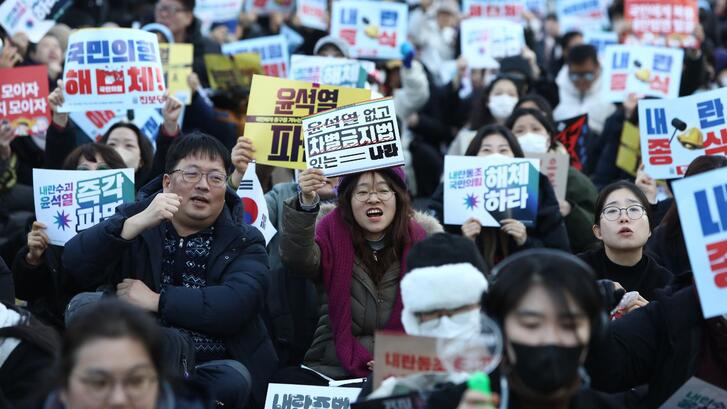When we’re faced with a video recording of an event—such as an incident of police brutality—we can generally trust that the event happened as shown in the video. But that may soon change, thanks to the advent of so-called “deepfake” videos that use machine learning technology to show a real person saying and doing things they haven’t.
This technology poses a particular threat to marginalized communities. If deepfakes cause society to move away from the current “seeing is believing” paradigm for video footage, that shift may negatively impact individuals whose stories society is already less likely to believe. The proliferation of video recording technology has fueled a reckoning with police violence in the United States, recorded by bystanders and body-cameras. But in a world of pervasive, compelling deepfakes, the burden of proof to verify authenticity of videos may shift onto the videographer, a development that would further undermine attempts to seek justice for police violence. To counter deepfakes, high-tech tools meant to increase trust in videos are in development, but these technologies, though well-intentioned, could end up being used to discredit already marginalized voices.
(Content Note: Some of the links in this piece lead to graphic videos of incidents of police violence. Those links are denoted in bold.)
Recent police killings of Black Americans caught on camera have inspired massive protests that have filled U.S. streets in the past year. Those protests endured for months in Minneapolis, where former police officer Derek Chauvin was convicted this week in the murder of George Floyd, a Black man. During Chauvin’s trial, another police officer killed Daunte Wright just outside Minneapolis, prompting additional protests as well as the officer’s resignation and arrest on second-degree manslaughter charges. She supposedly mistook her gun for her Taser—the same mistake alleged in the fatal shooting of Oscar Grant in 2009, by an officer whom a jury later found guilty of involuntary manslaughter (but not guilty of a more serious charge). All three of these tragic deaths—George Floyd, Daunte Wright, Oscar Grant—were documented in videos that were later used (or, in Wright’s case, seem likely to be used) as evidence at the trials of the police officers responsible. Both Floyd’s and Wright’s deaths were captured by the respective officers’ body-worn cameras, and multiple bystanders with cell phones recorded the Floyd and Grant incidents. Some commentators credit a 17-year-old Black girl’s video recording of Floyd’s death for making Chauvin’s trial happen at all.
The growth of the movement for Black lives in the years since Grant’s death in 2009 owes much to the rise in the availability, quality, and virality of bystander videos documenting police violence, but this video evidence hasn’t always been enough to secure convictions. From Rodney King’s assailants in 1992 to Philando Castile’s shooter 25 years later, juries have often declined to convict police officers even in cases where wanton police violence or killings are documented on video. Despite their growing prevalence, police bodycams have had mixed results in deterring excessive force or impelling accountability. That said, bodycam videos do sometimes make a difference, helping to convict officers in the killings of Jordan Edwards in Texas and Laquan McDonald in Chicago. Chauvin’s defense team pitted bodycam footage against the bystander videos employed by the prosecution, and lost.
What makes video so powerful? Why does it spur crowds to take to the streets and lawyers to showcase it in trials? It’s because seeing is believing. Shot at differing angles from officers’ point of view, bystander footage paints a fuller picture of what happened. Two people (on a jury, say, or watching a viral video online) might interpret a video two different ways. But they’ve generally been able to take for granted that the footage is a true, accurate record of something that really happened.
That might not be the case for much longer. It’s now possible to use artificial intelligence to generate highly realistic “deepfake” videos showing real people saying and doing things they never said or did, such as the recent viral TikTok videos depicting an ersatz Tom Cruise. You can also find realistic headshots of people who don’t exist at all on the creatively-named website thispersondoesnotexist.com. (There’s even a cat version.)
While using deepfake technology to invent cats or impersonate movie stars might be cute, the technology has more sinister uses as well. In March, the Federal Bureau of Investigation issued a warning that malicious actors are “almost certain” to use “synthetic content” in disinformation campaigns against the American public and in criminal schemes to defraud U.S. businesses. The breakneck pace of deepfake technology’s development has prompted concerns that techniques for detecting such imagery will be unable to keep up. If so, the high-tech cat-and-mouse game between creators and debunkers might end in a stalemate at best.
If it becomes impossible to reliably prove that a fake video isn’t real, a more feasible alternative might be to focus instead on proving that a real video isn’t fake. So-called “verified at capture” or “controlled-capture” technologies attach additional metadata to imagery at the moment it’s taken, to verify when and where the footage was recorded and reveal any attempt to tamper with the data. The goal of these technologies, which are still in their infancy, is to ensure that an image’s integrity will stand up to scrutiny.
Photo and video verification technology holds promise for confirming what’s real in the age of “fake news.” But it’s also cause for concern. In a society where guilty verdicts for police officers remain elusive despite ample video evidence, is even more technology the answer? Or will it simply reinforce existing inequities?
The “ambitious goal” of adding verification technology to smartphone chipsets necessarily entails increasing the cost of production. Once such phones start to come onto the market, they will be more expensive than lower-end devices that lack this functionality. And not everyone will be able to afford them. Black Americans and poor Americans have lower rates of smartphone ownership than whites and high earners, and are more likely to own a “dumb” cell phone. (The same pattern holds true with regard to educational attainment and urban versus rural residence.) Unless and until verification technology is baked into even the most affordable phones, it risks replicating existing disparities in digital access.
That has implications for police accountability, and, by extension, for Black lives. Primed by societal concerns about deepfakes and “fake news,” juries may start expecting high-tech proof that a video is real. That might lead them to doubt the veracity of bystander videos of police brutality if they were captured on lower-end phones that lack verification technology. Extrapolating from current trends in phone ownership, such bystanders are more likely to be members of marginalized racial and socioeconomic groups. Those are the very people who, as witnesses in court, face an uphill battle in being afforded credibility by juries. That bias, which reared its ugly head again in the Chauvin trial, has long outlived the 19th-century rules that explicitly barred Black (and other non-white) people from testifying for or against white people on the grounds that their race rendered them inherently unreliable witnesses.
In short, skepticism of “unverified” phone videos may compound existing prejudices against the owners of those phones. That may matter less in situations where a diverse group of numerous eyewitnesses record a police brutality incident on a range of devices. But if there is only a single bystander witness to the scene, the kind of phone they own could prove significant.
The advent of mobile devices empowered Black Americans to force a national reckoning with police brutality. Ubiquitous, pocket-sized video recorders allow average bystanders to document the pandemic of police violence. And because seeing is believing, those videos make it harder for others to continue denying the problem exists. Even with the evidence thrust under their noses, juries keep acquitting police officers who kill Black people. Chauvin’s conviction this week represents an exception to recent history: Between 2005 and 2019, of the 104 law enforcement officers charged with murder or manslaughter in connection with a shooting while on duty, 35 were convicted.
The fight against fake videos will complicate the fight for Black lives. Unless it is equally available to everyone, video verification technology may not help the movement for police accountability, and could even set it back. Technological guarantees of videos’ trustworthiness will make little difference if they are accessible only to the privileged, whose stories society already tends to believe. We might be able to tech our way out of the deepfakes threat, but we can’t tech our way out of America’s systemic racism.
Riana Pfefferkorn is a research scholar at the Stanford Internet Observatory

















